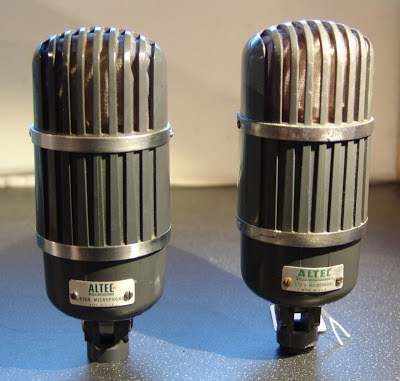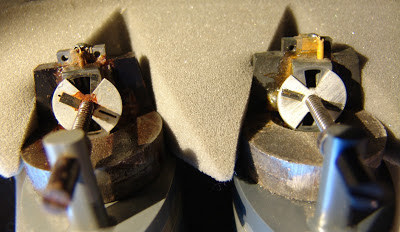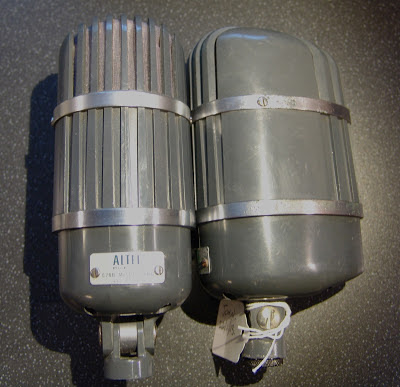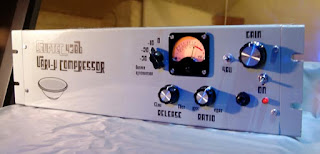 |
| Altec 670B (left) and 670A (right) ribbon microphones |
Q. What is the difference between Altec 670A and 670B ribbon microphones?
I had not realised that there was a difference until I re-ribboned this 670A for a client, which gave me an opportunity to compare it to our studio 670B. The two microphones look identical from the outside apart from the label. Both are housed in some kind of blue-grey plastic, and the label hides an impedance switch cryptically marked ‘1’ and ‘2’.
The ribbon in the earlier 670A is twice as wide as the later 670B, measuring 3.8mm and 1.9 mm wide respectively. The narrower gap between the magnets would also give a higher magnetic field, although I forgot to measure that.
 |
| Altec 670A ribbon and 670B (right) ribbons. |
Both ribbons are the same length, so if the same thickness of foil is used, the 670B ribbon would have (about) twice the impedance of the 670A. This has implications for the transformer design, as a different ratio and different inductance would be required.
A second difference is in how the transformer primary wire is routed. In the 670A (left) the thick wire is routed directly behind the ribbon, which would affect the pickup pattern of the mic. This is redesigned in the 670A and passed to the side of the ribbon.
 |
| Altec 670A and 670B pattern selectors |
Both mics were ready for new ribbons so I replaced both with 1.8 µm foil and measured the impedances (in position 2). The 670A had an impedance of 600Ω whereas the 670B measured 350Ω, which shows that the transformers are indeed different ratios.
It also suggests that the 670A would have originally been fitted with substantially thicker foil – perhaps 4 or 5 µm. The feel and stiffness of the corroded old ribbon also suggests this to be the case.
Here is a frequency plot of the two mics. The 670A is the red line, and the 670B, in blue has a slightly higher overall output. Both mics sound very good and quite similar in tone despite the differences.







